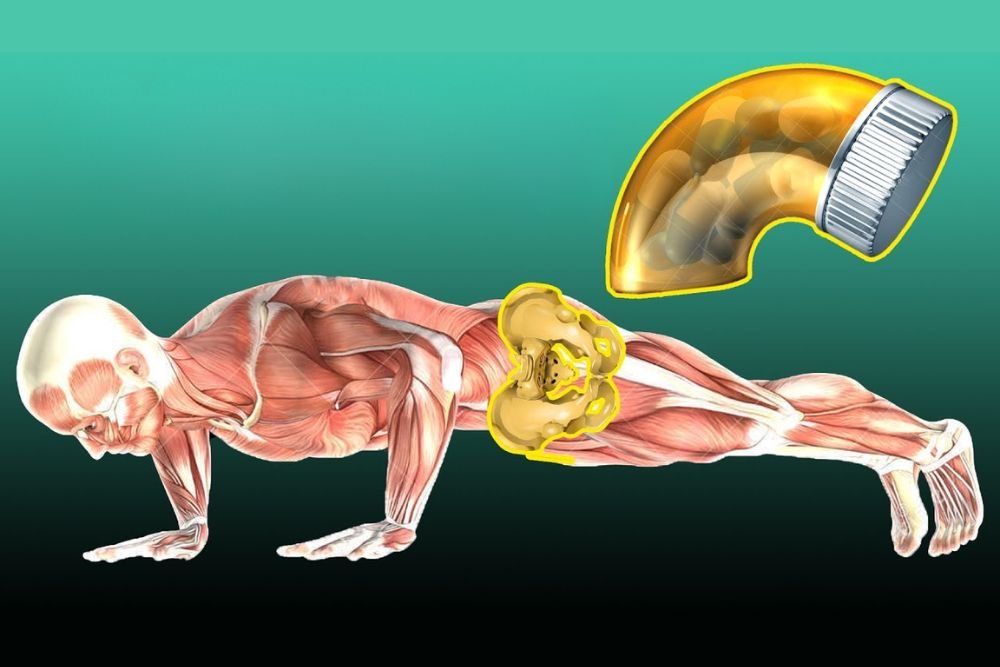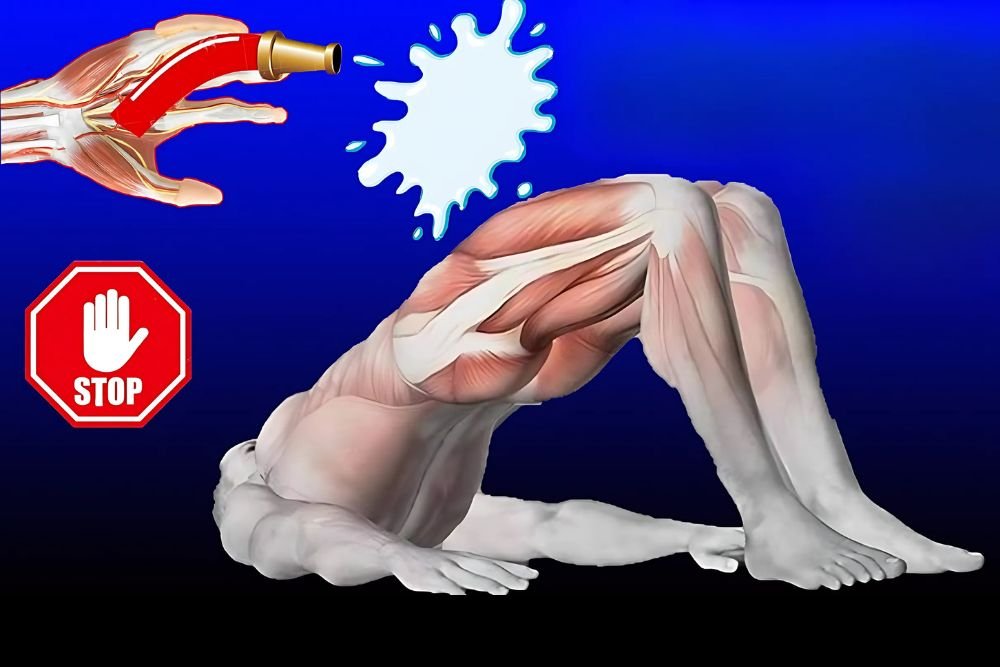Introduction to Kegel Exercises

What Are Kegel Exercises?
Kegel exercises are simple yet powerful movements designed to strengthen the pelvic floor muscles. These muscles support key organs like the bladder, bowel, and, in women, the uterus. For men, they play an essential role in supporting the bladder and prostate. Regularly practicing kegel exercises can improve bladder control, enhance sexual health, and boost core strength.
Why Are Kegel Exercises Important?
Weak pelvic floor muscles can lead to issues like urinary incontinence, pelvic pain, and reduced sexual performance. Strengthening these muscles with kegel exercises is a preventative and restorative approach that benefits both men and women.
Who Can Benefit from Kegel Exercises?
- Women: Often practiced during postpartum recovery or to prevent pelvic organ prolapse.
- Men: Beneficial after prostate surgery and for managing incontinence or enhancing intimacy.
- Anyone Seeking Core Stability: A strong pelvic floor supports posture and overall core strength.
5 Easy Steps to Strengthen Your Muscles
Step 1: Locate the Right Muscles
Identifying the correct muscles is the foundation of effective kegel exercises.
- For women: Imagine tightening around a tampon or stopping urine midstream.
- For men: Imagine pulling your testicles upward or stopping urine midstream.
Tip: Use the urine-stopping method only to locate the muscles. Regularly stopping your urine midstream can cause issues over time.
Step 2: Get Comfortable
Start in a position where you feel relaxed and supported. Beginners often find lying down the easiest. As you gain confidence, try sitting, standing, or even walking while practicing kegel exercises.
Step 3: Practice Basic Contractions
- Tighten your pelvic floor muscles and hold for 3-5 seconds.
- Relax for the same amount of time.
- Repeat 10-15 times per session.
Aim for three sessions daily. This routine strengthens the muscles gradually and effectively.
Step 4: Progress Gradually
As your strength improves:
- Increase hold times to 10 seconds.
- Add more repetitions to each session.
- Introduce advanced techniques like pulsing contractions or reverse Kegels.
Step 5: Incorporate Kegels Into Daily Activities
One of the greatest advantages of kegel exercises is their discretion. You can practice them while:
- Driving or commuting.
- Watching TV.
- Waiting in line.
Making them part of your daily life ensures consistency and long-term success.
Benefits of Kegel Exercises for Men and Women
Improved Bladder Control
One of the most significant benefits of kegel exercises is enhanced bladder control. Whether you’re managing occasional leaks or recovering from surgery, strengthening the pelvic floor helps:
- Reduce accidental leaks during activities like sneezing or laughing.
- Minimize nighttime bathroom trips, improving sleep quality.
- Aid in bladder function recovery after childbirth or prostate surgery.
These improvements can greatly enhance your confidence and quality of life.
Enhanced Sexual Health
Kegel exercises aren’t just about function—they’re about pleasure too.
- For women: Kegels improve vaginal tone and sensitivity, increasing pleasure during intimacy.
- For men: A strong pelvic floor enhances erection quality and control, leading to greater stamina.
Both genders benefit from improved confidence and satisfaction in their intimate lives.
Faster Recovery Post-Surgery
Whether it’s postpartum recovery or rehabilitation after prostate surgery, kegel exercises accelerate healing by:
- Restoring pelvic muscle strength.
- Promoting blood circulation for better healing.
- Reducing discomfort and improving bladder and bowel control.
Prevention of Future Pelvic Health Issues
Regularly practicing kegel exercises acts as a preventative measure:
- Women can reduce the risk of pelvic organ prolapse.
- Men can prevent urinary incontinence and maintain prostate health.
- Both can avoid chronic pelvic pain and dysfunction as they age.
Advanced Techniques for Mastering Kegel Exercises
Long Holds for Endurance
- Contract your pelvic floor muscles and hold for 10-15 seconds.
- Relax for 5 seconds, then repeat 8-10 times.
This technique builds endurance, which is particularly beneficial for managing bladder control and enhancing intimate moments.
Pulsing Contractions for Responsiveness
- Quickly tighten and release your pelvic floor muscles in rapid succession.
- Repeat this motion for 20-30 pulses in one session.
This technique trains your muscles to respond quickly, reducing the risk of leaks or accidents during sudden movements.
Reverse Kegels for Balance
- Focus on relaxing your pelvic floor instead of tightening.
- Gently push outward as if starting to urinate.
- Hold for 5-10 seconds, then relax.
Reverse Kegels balance strength with flexibility, preventing over-tightness in the pelvic muscles.
Combining Kegel Exercises with Other Activities

During Physical Workouts
Enhance your fitness routine by integrating kegel exercises into other movements:
- Planks: Contract your pelvic floor while holding a plank.
- Squats: Tighten your pelvic muscles at the lowest point of a squat and release as you stand.
- Yoga Poses: Incorporate Kegels into poses like the bridge or downward dog for a holistic workout.
While Performing Everyday Tasks
Turn ordinary activities into opportunities to practice kegel exercises:
- Tighten and hold your pelvic floor muscles while brushing your teeth.
- Perform Kegels while waiting in line at the grocery store.
- Combine them with mindful breathing exercises to reduce stress and tension.
Advanced Applications and Benefits of Kegel Exercises
Strengthening Beyond the Basics
After mastering the fundamentals of kegel exercises, advancing your practice can lead to even greater benefits. Here’s how:
Adding Resistance to Your Routine
- Weighted Kegels: Use Kegel weights for a more challenging workout. These tools increase the intensity of your contractions.
- Resistance Bands: Incorporate bands during movements like squats or bridges to engage your pelvic floor alongside other muscle groups.
- Dynamic Tension: Apply gentle pressure internally or externally while performing your exercises to maximize muscle engagement.
Practicing Functional Kegels
Functional exercises mimic real-life activities, improving muscle responsiveness during daily tasks:
- Walking Contractions: Tighten your pelvic muscles with each step for 3-5 seconds, then release.
- Standing Balance: Perform Kegels while balancing on one foot to strengthen both your pelvic floor and core.
- Lunges with Engagement: Activate your pelvic muscles as you descend into a lunge and release as you stand.
Monitoring Progress for Long-Term Success
Keeping track of your progress ensures consistent improvement and helps maintain motivation:
- Set Realistic Goals: Begin with short holds and fewer repetitions, gradually increasing duration and intensity.
- Track Achievements: Record improvements, such as fewer leaks, better control, or longer contraction times.
- Celebrate Milestones: Recognize achievements like completing more repetitions or holding contractions longer to stay encouraged.
Also read: Kegel | 7 Must-Know Facts to Improve Your Pelvic Health
Long-Term Benefits of Kegel Exercises
Prevention of Age-Related Issues
Regular kegel exercises can help prevent:
- Pelvic organ prolapse in women.
- Urinary incontinence in both genders.
- Chronic pelvic pain associated with muscle weakness or tension.
Supporting Core Stability
A strong pelvic floor supports your entire core, leading to:
- Better posture.
- Enhanced balance and stability during physical activities.
- Reduced lower back pain and improved movement efficiency.
Boosting Emotional and Mental Well-Being
The confidence that comes from better pelvic health often extends to other areas of life. Feeling in control of your body reduces anxiety and enhances overall well-being.
Read also: Linkedin Source
Overcoming Common Challenges
Staying Consistent
Consistency is key to seeing results with kegel exercises. Here’s how to build the habit:
- Pair with Routine Tasks: Combine your exercises with daily habits, like brushing your teeth or waiting for your coffee to brew.
- Set Reminders: Use alarms or apps to keep track of your sessions.
- Join a Community: Connect with others practicing Kegels for support and accountability.
Addressing Plateaus
If progress slows or stalls:
- Increase Intensity: Hold contractions longer or add more repetitions.
- Try New Techniques: Incorporate advanced methods like pulsing or reverse Kegels.
- Seek Expert Advice: Consult a physical therapist for personalized recommendations.
Building a Sustainable Kegel Routine
Making Kegel Exercises a Lifelong Practice
Sustainability is the key to enjoying the long-term benefits of kegel exercises. To integrate them seamlessly into your lifestyle:
- Set a Daily Routine: Schedule specific times for your exercises, such as morning, afternoon, and evening.
- Combine With Existing Habits: Practice Kegels during routine tasks like commuting, cooking, or even showering.
- Stay Flexible: Adapt your routine to fit your schedule, ensuring you don’t skip sessions.
Adjusting Your Routine Over Time
As your pelvic muscles strengthen:
- Increase the duration of your holds from 10 seconds to 15 or 20 seconds.
- Add more repetitions to your sessions, aiming for three sets of 15-20 contractions.
- Introduce new techniques, such as combining Kegels with strength training or yoga.
Advanced Techniques for Continued Progress
Dynamic Kegel Workouts
Incorporating movement adds a functional aspect to kegel exercises:
- Walking Kegels: Engage your pelvic floor with each step during a brisk 10-minute walk.
- Standing Drills: Tighten and hold your pelvic muscles while performing standing exercises like toe touches or calf raises.
- Balance Training: Combine Kegels with one-legged balance drills to improve stability and core strength.
Combining Kegels With Core Workouts
Your pelvic floor is an integral part of your core. Integrating Kegels into core exercises maximizes results:
- Plank Holds: Engage your pelvic floor during plank exercises to strengthen your entire core.
- Dead Bug Exercise: Tighten your pelvic muscles while extending your arms and legs in this dynamic movement.
- Yoga Integration: Practice Kegels during poses like the bridge, warrior, or tree pose for a holistic workout.
Long-Term Benefits of Kegel Exercises
Improved Physical Health
A strong pelvic floor supports overall physical health by:
- Enhancing posture and reducing lower back pain.
- Improving balance and coordination during physical activities.
- Supporting bladder and bowel health for better daily function.
Enhanced Quality of Life
Consistent kegel exercises lead to:
- Greater confidence in managing bladder and bowel control.
- Improved sexual health and intimacy for both men and women.
- A proactive approach to preventing future health issues.
Staying Motivated for Lifelong Practice
Celebrate Your Progress
Acknowledge milestones to maintain enthusiasm:
- Fewer leaks or bathroom trips.
- Longer contraction holds or more repetitions.
- Enhanced physical or intimate performance.
Join a Supportive Community
Online forums, social media groups, or local health workshops focused on pelvic health provide:
- Encouragement from like-minded individuals.
- Tips and tricks to refine your technique.
- Accountability to stay consistent.
Keep It Interesting
Switch up your routine with advanced techniques, new positions, or resistance tools to prevent boredom and maintain engagement.
Conclusion: Strengthen Your Pelvic Floor With Kegel Exercises
Practicing kegel exercises is a simple yet transformative step toward better pelvic health. By strengthening your muscles, you can improve bladder control, enhance sexual well-being, and support overall core strength. Whether you’re just starting or looking to advance your practice, these steps provide a roadmap to success.
Your Turn to Take Action
Start practicing kegel exercises today and experience the benefits firsthand. Share your progress, tips, or questions in the comments below. Your insights might inspire others to begin their journey to better pelvic health and a stronger, more confident self.